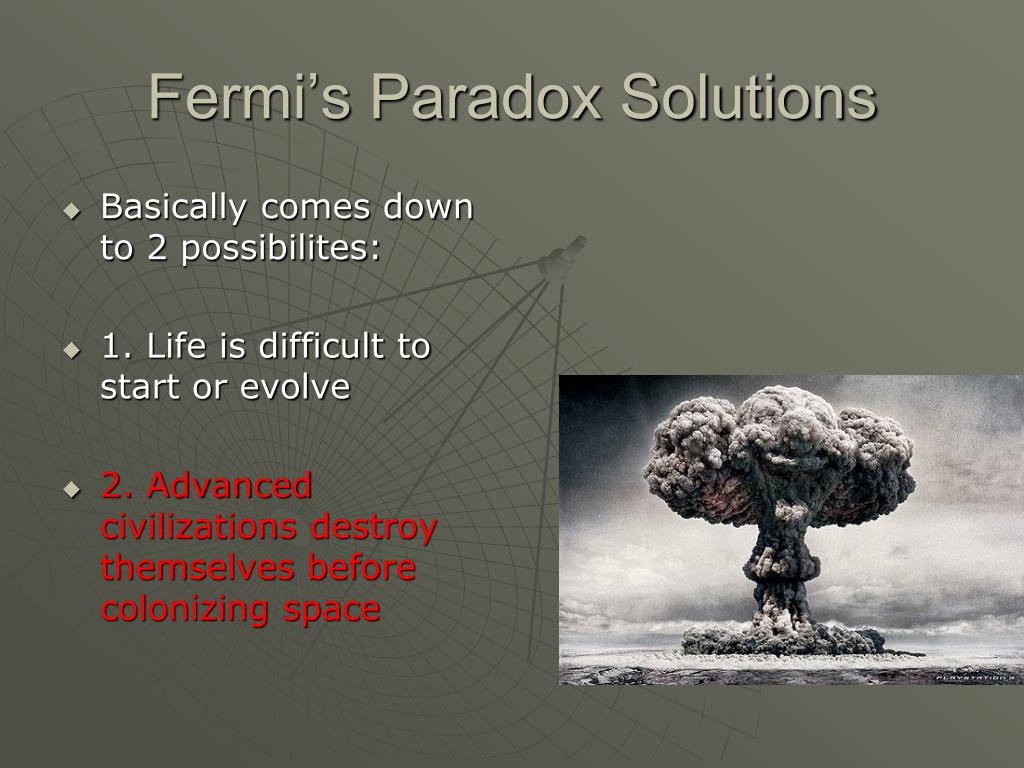

In the ensuing decades since 1961, numerous leading scientists have examined Fermi’s paradox and have proposed solutions. The values originally estimated by Drake in 1961 were R = 10, f p = 0.5, n e = 2, f l = 1, f i = 0.01, f c = 0.01, L = 10,000, so that N = 10 (other estimates vary widely). L = length of time such civilizations release detectable signals into space (before dying). N e = average number of planets that can support life, per star that has planetsį l = fraction of the above that eventually develop lifeį i = fraction of the above that eventually develop intelligent lifeį c = fraction of civilizations that develop technology that signals existence into space R * = average rate of star formation per year in galaxyį p = fraction of those stars that have planets N = number of civilizations in our galaxy that can communicate

Back in 1961, Frank Drake encapsulated the issues involved in his eponymous equation: And any discovery of a distant civilization, say by analysis of microwave data or observation of laser-like signals, would certainly rank as among the most significant and far-reaching of all scientific discoveries.

Behind his question was the following line of reasoning: (a) There are likely many other technological civilizations in the Milky Way galaxy (b) It is highly likely that other technological civilizations are many thousands of years more advanced than us (since if they are less advanced by even a few decades they would not be technological) (c) In a few million years, they could have explored or even colonized many distant planets, certainly encompassing the Milky Way (d) So why don’t we see any evidence of extraterrestrial civilizations?Ĭlearly the question of whether other civilizations exist is one of the most important questions of modern science. In the summer of 1950, while having lunch with colleagues who were chatting about recent reports of “flying saucers” in the news, nuclear physicist Enrico Fermi suddenly blurted out, “Where is everybody?”.


 0 kommentar(er)
0 kommentar(er)
